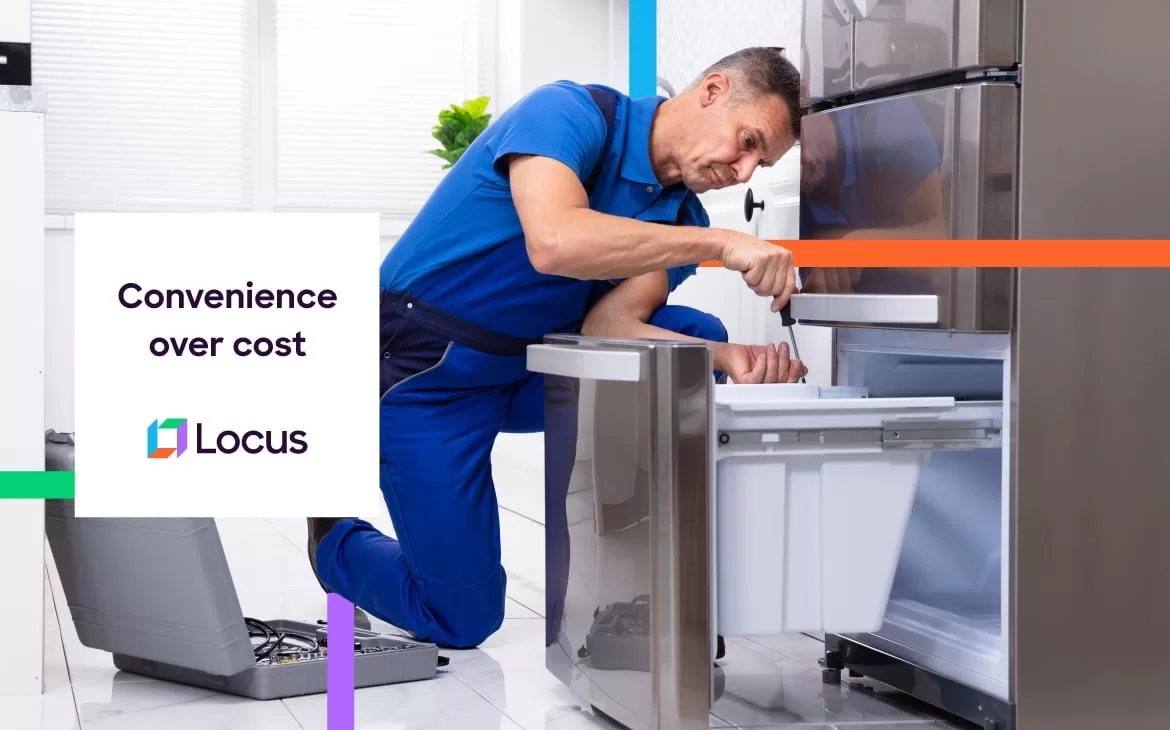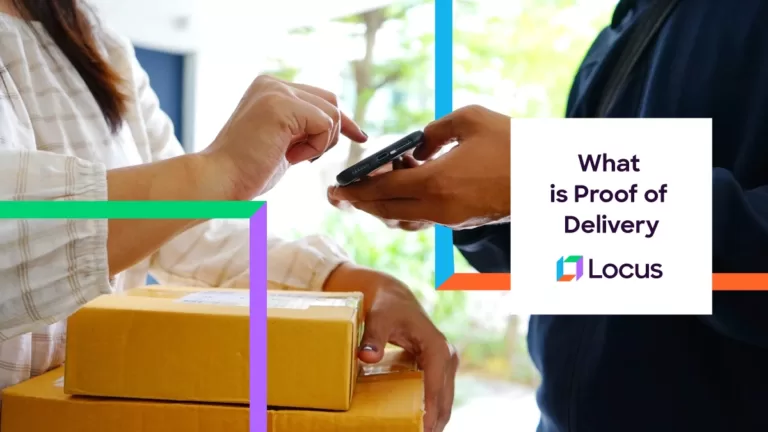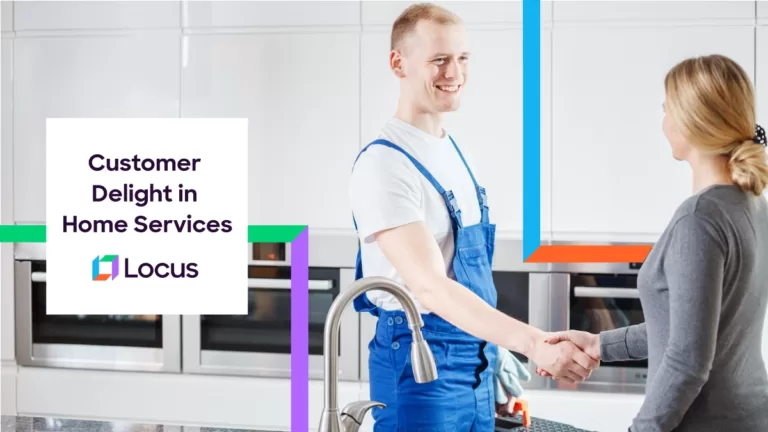Last Mile Delivery Optimization
Why Should Last-Yard Deliveries Prioritize Convenience Over Cost
Aug 16, 2022
8 mins read

In the year 2021, around 210 million packages were stolen across America. Things get tough when your customers lose highly-expensive items to porch pirates. Damaged, delayed or lost deliveries negatively impact convenience of customers in the last mile. In an attempt to add convenience to customers, the concept of last-mile delivery has evolved into the last yard.
Last-yard delivery has redefined the meaning of convenience and costs in last-mile logistics. Before learning about the importance of convenience in the last yard, it is crucial to first understand the concept of the last yard. Let’s dive in.
What is the last yard in logistics?
Last-yard is an extended stage in last-mile logistics that ensures goods promptly reach customers’ hands or the point of use. The value is created in the last mile when goods are available at locations where customers can start using them and this is what the last yard does in logistics.
For instance, you run a grocery store and you have ordered a stock of ice cream. You are busy with your accounting and billing tasks. The delivery professional places the ice-cream package at the shop’s reception area and goes back. As every store professional is busy helping customers, the ice cream stays on the reception floor.
Wouldn’t it be great if the delivery professional restocks ice creams into the refrigerator rather than placing it at the reception desk? The last yard brings the product to where the end customer will use it.
What is the difference between the last yard and last mile in logistics?
The last-mile delivery ends when you deliver products to the point of receipt or the customer’s doorstep. But the last yard begins when the professional arrives at the delivery location. Beyond reaching the customer’s doorstep, the last yard is concerned about routing the product to a specific location where customers may need or use it.
Example
You might have ordered a ready-to-assemble luxury sofa from a furniture retail outlet. If the ready-to-assemble sofa parts are delivered as a parcel at your doorstep, it is last-mile delivery. Instead, if the ready-to-assemble sofa is placed in your desired location and assembled, it is a last-yard delivery.
Where are last-yard deliveries used?

The last yard is applicable to items that are large, fragile, temperature-sensitive or expensive, that is, all items that require a higher level of care and attention to detail. These products may be difficult or hard-to-assemble items and may require professional handling. The industries where last-yard deliveries are highly in use include:
- Home appliance deliveries
- Furniture delivery
- Electronic devices deliveries
- Medical and lab equipment deliveries
- Automotive and aviation deliveries
- Inventory replenishment for businesses
- Luxury products
- Artwork and rare antique items
- Retail and e-commerce deliveries that require quick and safe deliveries (Ex: perishable food products like fruits, vegetables, ice cream, meat, and cake)
What are the challenges involved in last-yard delivery?
The challenges in last-yard logistics occur when the field professional or delivery agent arrives at the delivery location. Most of these challenges contribute to a terrible customer experience in the last yard.
- Difficulty in finding the right addresses and parcel lockers
- Difficulty in spotting the right customer address
- Customers not being available at their location leads to failed and missed deliveries
- Increasing security constraints that prevent entry to the delivery address
- Lack of adequate storage space or facility
- Rising time constraints due to customer expectations for quicker deliveries
- Fall in the productivity of field service professionals or delivery agents
Why should businesses prioritize convenience over cost in the last yard?

The degree of convenience provided to customers is higher in the last-yard deliveries compared to last-mile delivery. Imagine that you run a cake business and deliver it to customers. If the cake you deliver reaches the customer doorstep damaged, the customer will either cancel the delivery or will not order cakes from you again.
Instead, if you bring the cake home safe and place it in a refrigerator, you elevate the level of convenience to customers. Rather than the cake getting frozen or damaged at the doorstep, placing it in the refrigerator means prioritizing convenience over cost. Apart from the added importance to convenience in the last yard, it is crucial to know why businesses should prioritize convenience over costs in it.
Demand for flexible time-slots
When you deliver a product to the point of use, customers expect it to have it at their convenient time. By not giving the option to reschedule their time slots, you lose customers. Serving customers at their convenient time-slots ensures no package is left unattended at the customer’s doorstep.
Olivia has ordered some desktop accessories from a website. The website shows that her orders will be delivered and installed between 1pm and 3pm. Due to an emergency appointment, she leaves home. If she does not have the choice of changing the delivery and installation time slots, it will lead to a failed delivery.
As of 2020, the average cost incurred due to failed deliveries in the US is $17.2. Not offering flexible time slots for last-yard deliveries led to failed delivery attempts adding up last-mile logistics costs.
When you allow customers to select their time slots for deliveries, you save reattempted delivery costs. Through flexible time slot options for rescheduling last-yard deliveries, you give customers control over their appointments thereby improving satisfaction.
On-time technician visits
You disappoint customers and lose their trust when you do not deliver products within strict timeframes. Ensuring on-time technician visits becomes crucial especially while dealing with time-sensitive, perishable, temperature-sensitive or heavy products like medical samples or refrigerators.
The major barrier for last-yard professionals in making on-time visits is the difficulty in spotting customer addresses. Especially if the customer you intend to serve stays in a residential community, townhome or high-rise building, finding them becomes challenging. This is where the geocoding feature proves useful.
Locus’ geocoding feature converts the unclear text addresses into exact geographical coordinates. It helps last-yard professionals to reach the intended recipient at the right time. By reaching the customer location at the right time, you avoid unnecessary delays and additional time taken to install the products.
With a higher percentage of on-time visits, you avoid costs incurred in reattempted deliveries. This makes your last-yard deliveries more convenient to customers, thereby improving brand loyalty and saving costs.
Need for added transparency
By bringing transparency to the last yard, we mean informing customers on how delivery progresses and when it will reach them.
Your customer orders a washing machine and wants it to be delivered and installed in her home. You have informed her that the washing machine will reach her after four days of the order. The customer, being an office-goer, needs the exact Expected Time of Arrival (ETA) and timely notifications on the order progress.
If the ETA is 8 am to 9 am, and the tracking link is not provided, she becomes clueless about the order reaching her on-time. This would result in missed deliveries and hampers your brand reputation.
Real-time fleet tracking enables your customers to track deliveries from pickup to the delivery stage. It provides timely notifications and deviation alerts to customers when there are Service Level Agreement (SLA) breaches. Using advanced shipment tracking capabilities, you can build a sense of trust and security among your customers. It helps you eliminate damaged deliveries, mishaps or delays in deliveries, thereby saving massive reverse logistics costs.
Add convenience to your last-yard deliveries with Locus
Managing last-mile delivery is a grueling task for dispatchers, as it is the costliest component of the supply chain. But last-yard deliveries involve a greater level of complexity and costs compared to the last-mile delivery. It is arduous to manage real-time traffic, installation time, turnaround time, and scheduled and ad-hoc appointments without technological support.
The Locus dispatch management platform is an all-in-one solution that can fulfill your last-yard delivery needs. Its advanced machine learning capabilities help you quickly assign service tasks to the available last-yard professional at the customers’ preferred time windows. Its real-time tracking feature enables you to manage dynamic customer demands and handle resource shortages during peak business hours.
Locus’ route optimization feature enables you to plan routes for last-yard deliveries so that your technicians can complete maximum service requests in a given time.
With Locus’ dispatch management solution, you can reduce the turnaround time of your fleet and maximize SLA adherence, thereby improving your resource utilization. Its dynamic routing abilities help you plan multi-day routes with rests and breaks so that your service staff doesn’t get burdened with tasks. It allows you to effectively and efficiently manage cancellations, reschedule, or ad-hoc order requests.
Looking to build a convenient last-yard delivery experience for your customers? Try a demo with Locus!
Related Tags:

Delivery Experience
What is Proof of Delivery and Why do you Need it for Your Customers?
Proof of delivery (POD) is a documentary proof of a shipment to acknowledge that an order successfully arrives at its destination.
Read more
Home Services
Beyond Service With A Smile: 5 Ways to Ensure Customer Delight in Home Services
Getting your washing machine fixed, or deep cleaning your air conditioner or your house has never been easier than opening an app, all thanks to home service businesses. Its astounding growth reflects how the modern consumer is now firmly at the center of the supply chain, pulling goods and services to their homeplace. But thanks […]
Read moreMOST POPULAR
EDITOR’S PICKS
SUBSCRIBE TO OUR NEWSLETTER
Stay up to date with the latest marketing, sales, and service tips and news


Why Should Last-Yard Deliveries Prioritize Convenience Over Cost